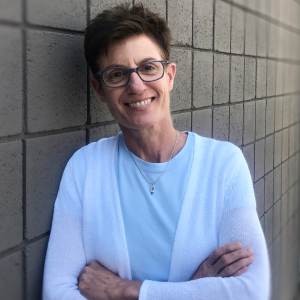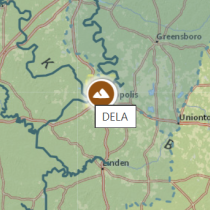Ecology Moving Forward: Thoughts on the 2018 Ecological Society of America Annual Meeting
September 26, 2018
By Sharon Collinge, Past Observatory Director and Chief Scientist
What does the future of ecological research look like? And where does the NEON project fit in? I had the opportunity to reflect on these questions in depth at the recent annual meeting of the Ecological Society of America (ESA).
I have long been involved with ESA in various capacities, but I took a breather from attending the annual meeting for the last few years. Returning to this year's meeting in New Orleans, I was struck both by what is still the same in this community of ecologists as well as what is changing. While I was still inspired by the strong commitment and enthusiasm that have always characterized these meetings, I noticed a significant expansion in the types of research being done, the methods researchers are using, and in the diversity of researchers getting involved.
Some of these changes have been a long time coming. Ecology today is more network-oriented and more collaborative than ever before. We are seeing a shift from projects driven by individual observers in the field to collaborative research projects that tap into data from well-established, organized efforts such as the Long-Term Ecological Research (LTER), AmeriFlux, GLEON, and the Critical Zone Observatory (CZO). These networks are moving ecology into the era of "big data" and enabling researchers to tackle questions about ecological systems in ways never before possible.
As ecology moves towards new methods, it is also attracting different kinds of thinkers to the field. At this year's ESA meeting, I was especially impressed by the energy and diversity of early career scientists in the audience. These young researchers are bringing fresh ideas and new skill sets that are well matched to the opportunities that they have in front of them.
As big data continues to transform ecology, it will be these young scientists who will carry the field forward. The shared data generated by large ecological networks, including the NEON project, enables early career scientists, and even undergraduate students, to conduct original research that would not have been possible in earlier eras. Rather than conducting time-consuming and expensive field observations on their own, they can dig into the wealth of data already available to look for new connections, test existing theories and hypotheses, and refine ecological models. Collaborative ecology is democratizing the field and making it easier for researchers to start their own research programs early in their careers.
The NEON project is very much in the middle of these shifts. When the observatory was first envisioned, almost two decades ago, few people fully predicted or appreciated the impact that evolving data science methods would have on the way ecological research is conducted. But now, as the observatory moves from construction to full operations, we find that our approach to gathering and sharing ecological data on a continental scale is right in line with today's methods.
We are also thrilled to have a role in helping young researchers jumpstart their careers. Many students and post-docs are among the first researchers putting the NEON data to use. At the same time, we are creating opportunities for early career scientists to develop their data skills, explore the available data, and network with other experienced researchers.
At ESA 2018, the NEON project partnered with the NSF and ESA to sponsor 17 early career scientists. In addition to paying their expenses so they could attend the conference, we organized workshops and events for them at the meeting. These included a half-day NEON data skills workshop, a panel discussion with researchers using NEON data, an invitation-only networking event, and a symposium featuring different approaches to data-driven ecology.
Seeing scientists at all stages of their careers coming together at these events was the highlight of the meeting for me. It was inspiring to see the ways in which NEON data are already providing opportunities for transformative science.
In many ways, for me these meetings felt like the culmination of something that has been building for a long time. The NEON project is no longer just an idea. It is now here and fully operational. Instead of using these meetings to try to promote awareness among ecologists, we are now watching those ecologists share the insights they are gaining from the NEON data. As Stephanie Hampton, the NSF Division Director of Environmental Biology, said during our panel discussion, "We knew we would get here, and here we are."
But of course, this year really marks the beginning of the NEON project's impact on ecology. Over the next 30 years, researchers who are starting their careers now will put NEON data to use in ways we can only imagine. I can't wait to see what the next leg of the journey will bring.
Also, make sure to check out our upcoming October 5th application deadline for an early November Explore NEON Workshop that will take place in Boulder, CO. This funded workshop opportunity is geared towards graduate students interested in using NEON data.

